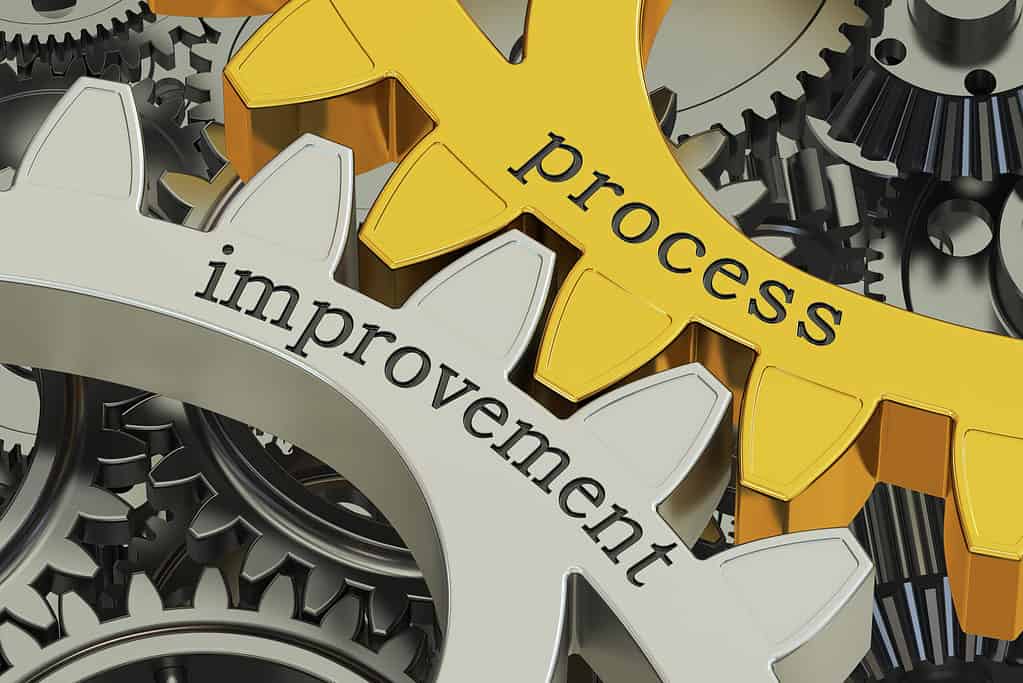
What is rolled throughput yield?
Your company has just announced that its product line has a 100% total throughput rate, touting it as a great win for everyone. However, from your perspective, you see massive amounts of rework being performed, disrupting the production lines, costing additional money, and impacting on-time delivery.
If only there was an easy-to-see metric that could help show the company that while total throughput rates are high. Furthermore, the production line has serious problems that need to be addressed.
That metric does exist, and it is called rolled throughput yield.
An Overview: What Is Rolled Throughput Yield?

Rolled throughput yield is the probability of a product or service making it through the entire process without having a single defect. Ideally, you want this value to be 100%. However, that can only happen if all products pass each process step 100% of the time.
This is a valuable tool for opening people’s eyes to how defects impact a process. Many processes, especially when dealing with expensive products, simply rework a product that exhibits failures until it passes. Eventually, it’ll arrive at a total throughput yield of nearly 100%.
On the other hand, RTY does not factor in rework, screening out any product that has a single failure along the way. When a process has a high total throughput yield and a low rolled throughput yield, it’s a sign that large amounts of rework are being performed. This rework is waste that adds cost and negatively affects delivery rates.
Calculating RTY with an Example
The formula for rolled throughput yield is to multiply the passing rate of all the steps within the process together.
RTY = Yield 1 x Yield 2 x …. Yield N (N representing the yield of the final process step)
For our example, let’s say we have four processes, and at each process, there is a 15% first-pass failure rate. So, for every 100 products passed, 85 passed and 15 failed.
Using the formula, you multiply the pass percentage of each of the stages together. Whether the products that failed are reworked or scrapped is not relevant to rolled throughput yield. Rolled throughput yield is only concerned with the items that pass the first time, every time.

So, 85% multiplied by itself four times (the number of processes, each with an 85% pass rate) will give you an answer of 52.2%. On average, 52 products out of 100 will arrive at the end of the process without having a single failure along the way.
What this helps demonstrate is even with a relatively high level of success at each step. Once you factor them all together, a much smaller group makes it through the entire process without experiencing a single failure.
Best Practices for Rolled Throughput Yield

If your process improvement resources are limited, focus on the one or two steps with the lowest first-pass yield. These steps typically present you with the largest opportunity to improve rolled throughput yield.
Once you have acquired the rolled throughput rate, work on giving a dollar amount to the lost value. You’ll want to account for wasted materials in this calculation. Managers are likely to give more attention to the lost value figures than to the more abstract concept of rolled throughput rate.
Failure rates are affected not just by problems with the process, but by the inputs to the processes. Be sure to address any issues with parts (or information) that are causing problems with yields.
Other Useful Tools
RTY isn’t the only thing you’ll use to guarantee quality across the board. You might want to take a look at how VOC, or the voice of the customer impacts your production. This is just one of many voices you’ll acknowledge in Six Sigma. It is arguably one of the most important as a whole.
Additionally, you might be conducting assumption testing or hypothesis testing. The Anderson-Darling Test is a great way to check and see if your data falls under a normal distribution. Using this test can allow you to quickly see if something in your production workflow is falling out of established baselines.
RTY Is a Great Metric to Give You a Quick Glimpse into the Impact of Rework
Rolled throughput yield is a great way to show how rework is affecting your production line or office processes. When used in conjunction with other yield values, it can help give a more complete picture of how poor quality affects the day-to-day operation. Remember that any time spent doing a task more than once is a waste.